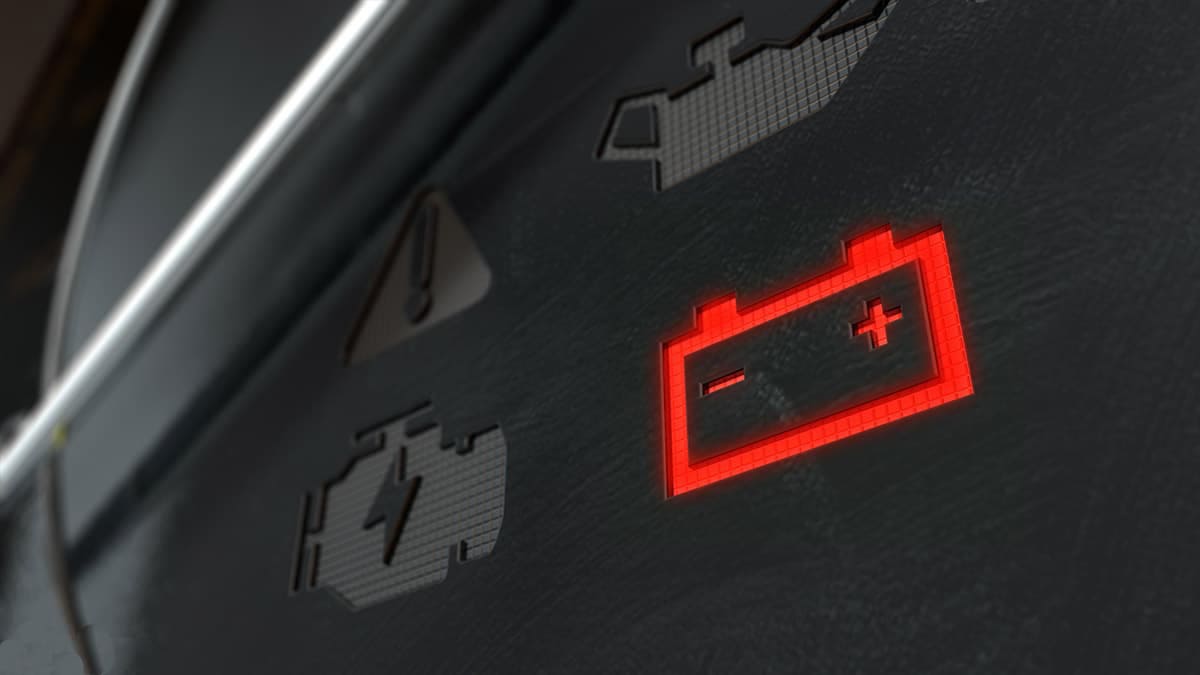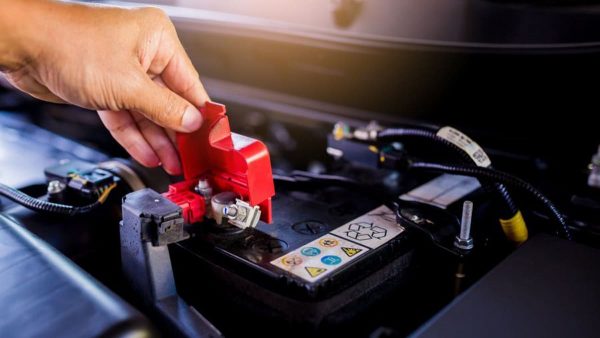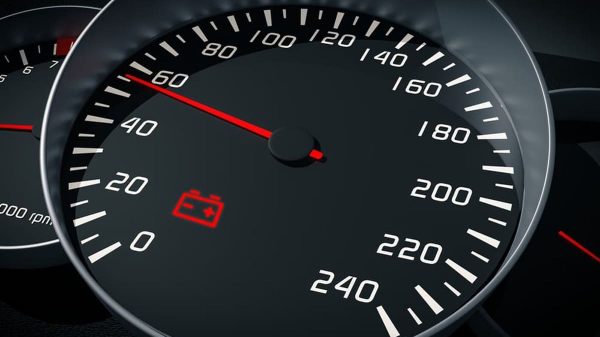When the battery light on your car’s dashboard flickers to life, it’s an unmissable beacon signaling that something is amiss in your vehicle’s electrical charging system. This light is far more than a mere dashboard decoration; it’s an essential warning mechanism. Ignoring it isn’t just unwise; it can lead to a cascade of mechanical failures with potentially dire consequences. This intricate alert can be a harbinger of various issues, from a faltering alternator to a completely exhausted battery. This article is meticulously crafted to demystify the reasons behind the illumination of your car’s battery light, explore the inner workings of your vehicle’s charging system, navigate through the processes for diagnosing this issue, discern when professional expertise is required, and present preventive strategies to safeguard the longevity and efficiency of your car’s electrical system.
Decoding the Dashboard: A Closer Look at the Battery Light
This critical indicator typically takes the shape of a battery symbol on your dashboard and is much more than just a light; it’s a sentinel overseeing the health of your car’s charging system. Think of it as akin to the check engine light, but specifically for your vehicle’s electrical wellbeing. This light springs into action, warning you of any discrepancies within the car’s charging system – a system that is integral to not only starting your vehicle but also in powering all its electrical components.
The normal behavior for this light is to go off once your car is running. If it remains illuminated or lights up during a journey, it’s a clear sign that your charging system is experiencing a hiccup. This system, responsible for keeping your battery charged and operational, is essential for the smooth running of your vehicle. Any disruption or malfunction within this system can cause the battery light to come on.
A Crucial Clarification: The Battery Light’s True Meaning
It’s a common misconception that a lit battery light directly translates to a battery on its last legs. However, this indicator is often pointing towards a more complex issue within the charging system. This system, when malfunctioning, can drain even a perfectly good battery, leading to unwarranted battery replacement. Understanding and investigating this light’s activation is, therefore, a must for any car owner.
Unraveling the Mystery: Root Causes of the Battery Light Illumination
The causes behind the activation of this light are varied, but they predominantly revolve around the vehicle’s charging system. A primary suspect is often the alternator, a pivotal component in converting mechanical energy from the engine into electrical energy to charge the battery and power the car’s electrical systems. If the alternator is underperforming or fails, it’s a straight path to the lighting up of the battery light.
Another potential issue could be a compromised serpentine belt. This belt is crucial for the alternator’s operation, as it translates the mechanical energy of the engine into the electrical energy that powers your car. Additionally, the battery itself could be the source of trouble. Factors like age, physical damage, or even extreme weather conditions can affect a battery’s performance, leading to the illumination of the warning light. Furthermore, an electrical fault within the charging system, perhaps a wiring issue or a malfunctioning component, could disrupt its ability to charge and maintain the battery efficiently
Detailed Analysis and Diagnostic Guide: Vehicle Charging System’s Functionality and Self-Maintenance Tips
The vehicular charging system, a cornerstone in modern automotive engineering, incorporates a trio of critical components: the battery, alternator, and voltage regulator. This system’s core mission is multifaceted – it diligently ensures the battery remains sufficiently charged, oversees the battery’s overall condition, and supplies power to the vehicle’s electrical network when the engine is running.
In this complex system, the alternator emerges as a key player. It skillfully converts the engine’s mechanical output into electrical energy, which is essential for two primary purposes: energizing the car’s diverse electrical apparatus and replenishing the battery’s charge. Complementing the alternator’s role is the voltage regulator. This component meticulously maintains a balanced voltage output, a vital function to prevent any detrimental overcharging or undercharging of the battery. Each element in this assembly plays a significant role in maintaining the system’s harmony, and any dysfunction in these components can manifest as an illuminated battery warning light.
For those inclined towards a do-it-yourself approach prior to resorting to professional automotive services, there are several diagnostic steps to undertake. An initial examination should focus on the serpentine belt. This involves a detailed inspection for any signs of deterioration or damage, with a replacement being advisable if any such issues are detected. To further gauge the health of the system, employing a multimeter to measure the battery’s voltage is recommended. This should be done in two distinct states: with the engine switched off and during operation.
An important indication of a potential system flaw is if there’s no significant elevation in the battery’s voltage when the engine is in use. This symptom could suggest a malfunctioning alternator. To delve deeper, a thorough inspection of all connections and cables associated with the alternator and battery is necessary. Pay special attention to any damage, wear, or corrosion on these connections, as they can impede the smooth transmission of electricity. Finally, examine the battery terminals for any looseness and secure them appropriately. Following these steps not only helps in pinpointing common issues within the charging system but also fosters a deeper understanding of the vehicle’s electrical workings.
Navigating Battery Troubles: Deciding on Expert Assistance
Battling battery troubles can often be a home-garage endeavor, yet it’s crucial to recognize the junctures that necessitate expert intervention. Should the battery indicator light flicker back to life shortly after you’ve replaced the battery, or if your thorough inspection of all accessible components yields no tangible problems, it’s a clear signal to seek the expertise of a professional.
Witnessing severe swings in your car’s voltage readings is a telltale sign to head to a specialized workshop. These fluctuations might be the harbingers of deeper malfunctions in your alternator or voltage regulator. In the same vein, if your vehicle stumbles upon challenges while starting up or sustaining its power, the safest course of action is to pull over and promptly call for professional assistance.
Crafting a Strategy for Prevention and Considering the Future
Embracing a regimen of regular vehicle upkeep stands as the premier strategy to avert the ominous glow of the battery light. This preventive measure encompasses consistent battery inspections, the timely replacement of batteries showing their age, and verifying the optimal condition of pivotal components like the alternator and serpentine belt.
Neglecting the warnings signaled by a battery light can escalate into more severe consequences for your car’s electrical ecosystem, culminating in expensive repair bills. A faltering charging system may deplete the battery to a point of no return. Furthermore, this can result in the delivery of erratic power to various systems of the car, setting the stage for unforeseen malfunctions.
Investing time in understanding the ramifications of an illuminated battery light pays dividends in preserving the health and efficiency of your vehicle. Whether the root cause is a malfunctioning element within the charging apparatus or a bona fide battery complication, prompt detection and rectification can avert extensive damage and exorbitant costs. Remember, your proficiency may aid in handling rudimentary inspections and minor glitches, but never waver in opting for professional aid when necessary. After all, it’s a matter not just of your car’s well-being but of your safety too.



